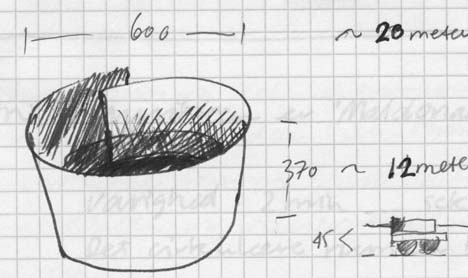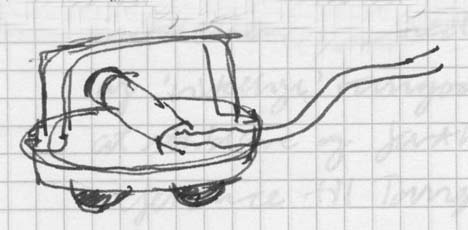Dancing in the miniature
The concept of dancing in the miniature is based on two premises. The first fundamental premise was to ‘see’ from the dancers’ point-of-view. For example by mounting a small video camera on the head of the leader in the dance and thus follow the movements of the body of the dancers by recording and afterwards seeing how the dancing couple experience the site and the room.
This idea was not very successful partly because this kind of video recording is very demanding to watch, and the compensation the human eye gets for the abrupt and rather quick turnings, walks and stops was difficult to mime in the video recording. Frustrations over the rather dull physical room and the video led to the second premise to compensate for these problems.
The second fundamental premise was to switch scale so that I could get more control over the form and expression of the place itself. In brief: to construct and use some kind of a model.

The two premises were the foundation for a series of experiments that led to:
- the building of a circular model in a scale 1:30, meaning that the size of the spiral is 600 mm, which is equivalent with twenty meters.
- the building of ‘the dancing couple’ as a small wagon with three ball bearings on which there was mounted a small video camera. The construction was made in such a way that the dancer-camera operator could be heading the wagon in all directions by his hand and arm.

It was the task of the camera operator as the experienced tango dancer to transform the movements of the whole body as it is in the real world of tango dancing – to the hand of the camera operator and the dance he constructs inside the model. |